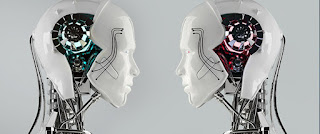Medtech and Art
http://www.localpulse.net/exam-results/medtech-board-exam-results-september-2014-list-passers-3411/
Having done my pre-med courses, I am very familiar with the close connection of medicine and art. This lecture allowed me to look at plastic surgeons, general physicians and orthodontists as more than just medical professionals, but as artists. This lecture also gave me a more artistic perspective on the human body. Bodies- an exhibit portraying the human body as art- dissected down to the human muscular system and allowed for an emotional/artistic look at us. This exhibit is a great example of how med-tech can flawlessly be combined with art.
http://www.innovation-for-extremes.org/wp-content/uploads/2015/09/Orthodontic-Gold-Coast-1.jpg
Prosthetic technology is another perfect example of this weeks lecture on medicine, technology and art. Prosthetic body parts are made using exact measurements and modern sensors. All the while maintaining amazing aesthetics. Additionally, prosthetic body parts are evolving with the advance of new technologies in many ways relating to the evolution of art.
http://inhabitat.com/these-beautiful-customized-3d-printed-prosthetic-legs-are-made-to-be-seen/
As stated before, medical professionals can be thought as artists in many different ways. Plastic surgeons reconstruct the face or body to create a more aesthetic look for individuals. Likewise, orthodontists use their tools and training to reconstruct a more desirable smile for patients. Additionally, professor Vesna's lecture stated that many medical equipment’s- X-ray's and MRI's -are in many ways forms of art.
Sources:
Vesna, Victoria."Medicine pt2." UC online. YouTube. 21 Apr. 2012. Web. 24 Apr. 2016.
Vesna, Victoria."Medicine pt1." UC online. YouTube. 21 Apr. 2012. Web. 24 Apr. 2016.
Vesna, Victoria."Medicine pt3.". UC online. YouTube. 21 Apr. 2012. Web. 24 Apr. 2016.
Casini, S."Magnetic Resonance Imaging (MRI) as Mirror and Portrait: MRI Configurations between Science and the Arts." Configurations 19.1 (2011). Project MUSE, Web. 24 Apr. 2016.
"At Apexart, Aesthetics of Plastic Surgery." The New York Times. Web. 24 Apr. 2016.











